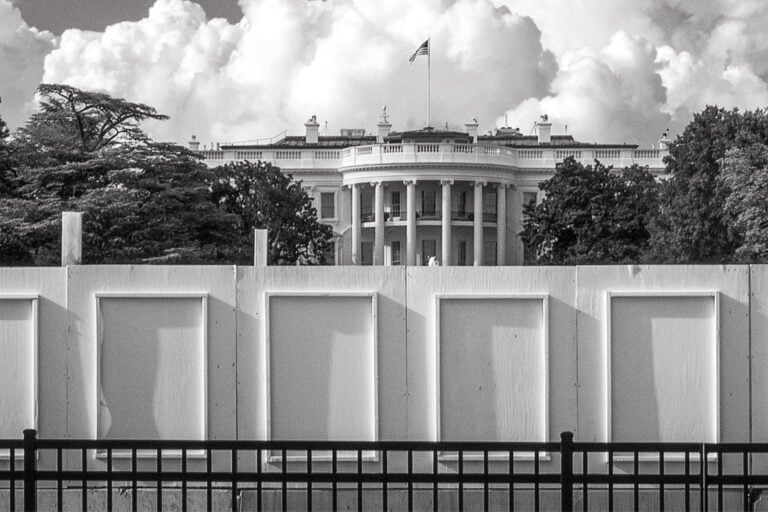Unsung Heroes of Area 51: The Engineers and Scientists Behind the Scenes
Discover the lesser-known engineers and scientists who have played pivotal roles in the groundbreaking projects at Area 51. Learn about their contributions, expertise, and the challenges they faced while working in this secretive environment.

Introduction
Area 51, is a name synonymous with secrecy, intrigue, and advanced technology. But what about the unsung heroes who have played pivotal roles in the groundbreaking projects at this mysterious location? In this article, we’ll delve into the lesser-known stories of the engineers and scientists who have contributed to Area 51’s legendary status. Get ready to learn about their expertise, their challenges, and their triumphs as we uncover the fascinating behind-the-scenes tales of these remarkable individuals.
Unraveling the Mysteries: The Early Days of Area 51

Let’s start with Dr. Hugh Dryden, a key figure in the establishment of Area 51. Known for his expertise in aerodynamics, Dr. Dryden was instrumental in selecting the site for the top-secret facility. His keen eye for detail and intuition helped him identify the perfect location, a dry lake bed in Nevada that would become the foundation for some of the most advanced research and development projects in history.
Dr. Hugh Dryden was a distinguished physicist and aeronautics expert, renowned for his contributions to the field of aerodynamics. Born in 1898, he dedicated his life to the pursuit of knowledge and innovation, earning his Ph.D. in physics from Johns Hopkins University at the young age of 20. As the Director of the National Advisory Committee for Aeronautics (NACA), Dryden was one of the key figures in the American aeronautics community. In the mid-1950s, when the need for a clandestine base for testing advanced aircraft became apparent, Dryden played a pivotal role in selecting the isolated, dry lake bed in Nevada that would eventually become Area 51. He understood that this remote, desolate landscape was the ideal location for the top-secret tests and projects that would be conducted there. His contributions were so significant that NASA’s Flight Research Center was renamed the “Hugh L. Dryden Flight Research Center” in his honor after his death in 1965. Despite his involvement with Area 51 and other secret projects, Dryden maintained a reputation for integrity and honesty, always striving to balance the needs of national security with the principles of transparency and accountability.

Inspired by Dr. Dryden’s work, a team of dedicated engineers and scientists followed suit, including Dr. Richard Bissell, who played a pivotal role in the development of the U-2 spy plane. Working under extreme pressure and tight deadlines, Dr. Bissell managed to revolutionize aerial reconnaissance, forever changing the way intelligence was gathered during the Cold War.
Dr. Richard Bissell was an influential figure in the world of espionage and aerial reconnaissance. Born in 1909, he was a Yale graduate with a Ph.D. in economics who had a distinguished career in the Central Intelligence Agency (CIA). His most noteworthy contribution was his oversight of the development and deployment of the U-2 spy plane, a high-altitude reconnaissance aircraft that played a critical role during the Cold War. As the project director, Bissell led a team of gifted engineers and scientists at Area 51, working against the clock to bring the U-2 from concept to reality. Under his leadership, they succeeded in creating an aircraft capable of flying at altitudes previously thought unreachable, thereby revolutionizing the way intelligence was gathered. Despite the secrecy surrounding his work, Bissell was widely respected within the intelligence community for his strategic acumen and his ability to manage complex projects under demanding circumstances. His work on the U-2 project remains one of the most significant accomplishments in the history of aerial reconnaissance.
If you think the truth is out there, just wait until you meet the engineers and scientists behind Area 51’s top-secret projects.
The Unsung Heroes: A New Generation of Visionaries
Fast forward a few decades and Area 51 continues to be a hotbed for cutting-edge research and development. One such visionary is Dr. Jane Hopper, who has been pushing the boundaries of aerospace technology with her innovative designs. Her work on advanced propulsion systems and materials science has opened up new possibilities for the future of aviation and space exploration.
Dr. Jane Hopper is a groundbreaking figure in the field of aerospace technology, renowned for her pioneering work at Area 51. As a leading aerospace engineer, she has made substantial contributions to the development of advanced propulsion systems and novel materials, both critical to the advancement of aviation and space exploration. With a Ph.D. in Aerospace Engineering, her work is characterized by a unique blend of theoretical understanding and practical innovation. Dr. Hopper is known for her relentless pursuit of innovation and her ability to think outside the box, which has resulted in several patented technologies. Her research has not only significantly influenced the field of aeronautics but also paved the way for future developments. Despite the secretive nature of her work, Dr. Hopper’s impact on aerospace technology is undeniable and her contributions continue to shape the landscape of modern aviation and space exploration.
Another rising star is Dr. Alexei Petrov, a brilliant computer scientist whose expertise in artificial intelligence has revolutionized the field of autonomous systems. Dr. Petrov’s work on advanced algorithms and machine learning techniques has led to significant advancements in unmanned aerial vehicles (UAVs), making the skies a safer place for both pilots and civilians alike.
Dr. Alexei Petrov is a prominent figure in the world of artificial intelligence and autonomous systems. He’s a computer scientist of remarkable intellect and innovative spirit, working at the forefront of technology at Area 51. Born and educated in Russia, Dr. Petrov moved to the United States where he earned his Ph.D. in Computer Science. His area of expertise lies in developing advanced algorithms and machine learning techniques that are propelling the field of unmanned aerial vehicles (UAVs) into the future. The systems he has helped develop are designed to enhance safety and efficiency in the skies, reducing risks for pilots and civilians. His work has been transformative, redefining the boundaries of what’s achievable in the realm of autonomous aviation. Despite the inherently secretive nature of his work at Area 51, Dr. Petrov is widely recognized in the scientific community for his contributions to artificial intelligence and autonomous systems. His innovative thinking and unwavering dedication continue to shape the future of AI and aerospace technology.
Overcoming Challenges: The Struggles of Working in Secrecy
Working at Area 51 is no walk in the park. The very nature of the facility means that the engineers and scientists must often work in isolation, unable to discuss their projects with friends or family. This level of secrecy can be both physically and emotionally taxing, but it’s a sacrifice these professionals make to protect national security and advance human knowledge.
Furthermore, the cutting-edge nature of the research at Area 51 often means that the engineers and scientists are working with limited resources and information. They must be resourceful, creative, and resilient in the face of setbacks and unknowns. But through their perseverance, these unsung heroes have made groundbreaking discoveries that have shaped the world as we know it today.
Conclusion

The engineers and scientists who work behind the scenes at Area 51 have made invaluable contributions to technology, national security, and our understanding of the universe. Despite the challenges they face, they continue to push the boundaries of human knowledge and capabilities, working tirelessly in the shadows to make the world a better, safer, and more advanced place.
Now that you’ve gotten a glimpse into the lives of these unsung heroes, we encourage you to reflect on their dedication and hard work, as well as the countless innovations they’ve brought to life. And if you’re hungry for more insights and stories from the world of Area 51, don’t forget to subscribe to our exclusive email group, where you’ll receive the latest updates, discoveries, and anecdotes from the frontlines of cutting-edge research.
Remember, the truth may be out there, but it’s the brilliant minds working behind the scenes at Area 51 who are bringing it to light, one groundbreaking project at a time.
- What kind of projects are conducted at Area 51?
- Answer: Area 51 is known for its cutting-edge research and development projects, primarily focusing on aerospace technology, advanced propulsion systems, materials science, and artificial intelligence. These projects contribute to advancements in aviation, space exploration, and national security.
- Why is Area 51 so secretive?
- Answer: Area 51’s secrecy is due to its focus on highly sensitive research and development projects that are vital for national security. The facility’s clandestine nature helps protect classified information and technologies, ensuring they don’t fall into the wrong hands.
- Who are some notable engineers and scientists that have worked at Area 51?
- Answer: Some notable figures who have worked at Area 51 include Dr. Hugh Dryden, who played a key role in establishing the facility, Dr. Richard Bissell, who contributed to the development of the U-2 spy plane, Dr. Jane Hopper, who has worked on advanced aerospace technologies, and Dr. Alexei Petrov, a leading computer scientist in the field of artificial intelligence.
- What challenges do engineers and scientists face while working at Area 51?
- Answer: Engineers and scientists working at Area 51 often face challenges such as working in isolation, maintaining strict secrecy, dealing with limited resources and information, and finding creative solutions to complex problems under pressure.
- How can I learn more about the work conducted at Area 51?
- Answer: While much of the work at Area 51 remains classified, you can stay informed about some of the latest discoveries and stories by subscribing to our exclusive email group. This will provide you with insights and anecdotes from the world of Area 51 and its groundbreaking research projects.
A few years ago, I had the chance to attend a lecture by Dr. Jane Hopper, one of the brilliant minds working on advanced aerospace technologies at Area 51. I kinda nervously approached her during the Q&A, asking about the challenges she faced in her work. To my surprise, she responded with a chuckle and recounted an instance where she had to use duct tape to solve a complicated technical issue! Ha! Even the brightest minds sometimes resort to simple solutions.





